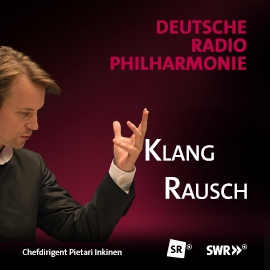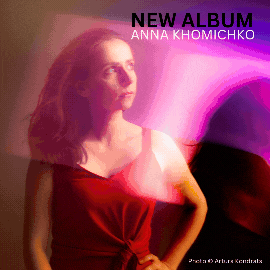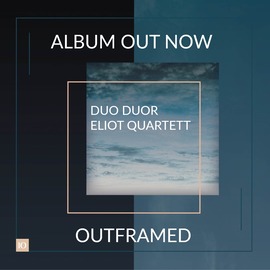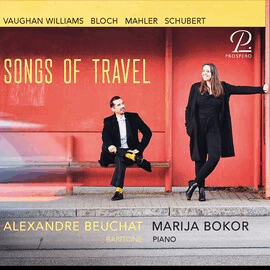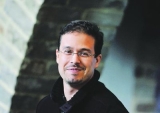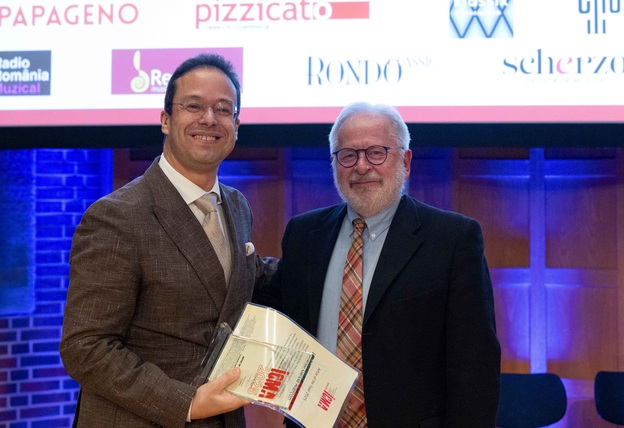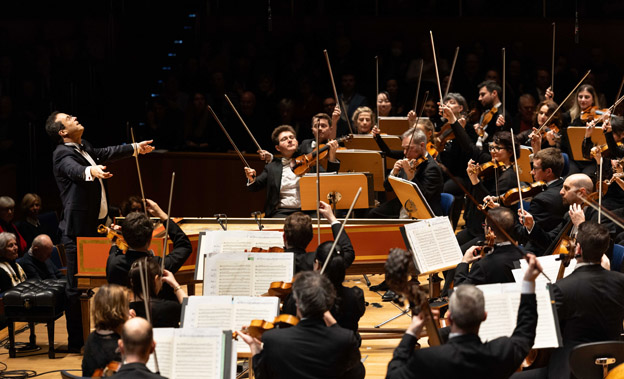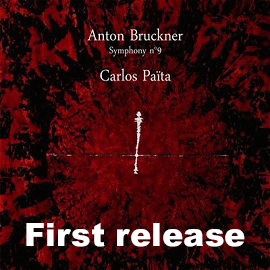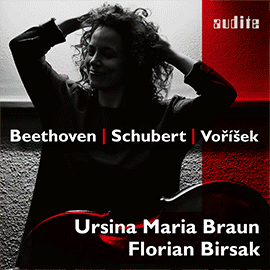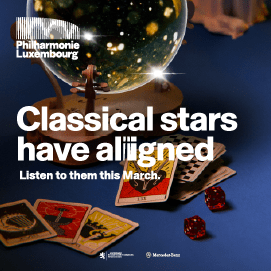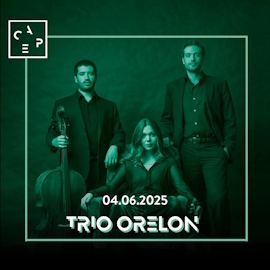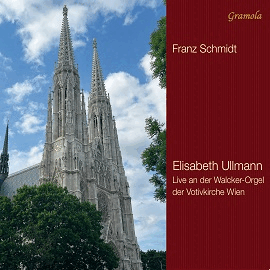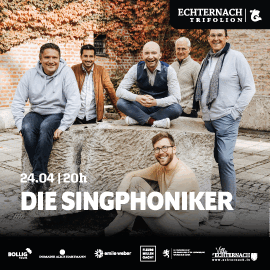What does this award mean to you?
Faced with an award of this caliber, and at 48 years of age, I find it a little difficult to look back. I suppose it’s normal because I’m in the middle of doing, building, creating. At first it was a very, very big surprise, but then I began to look around me and feel very grateful for everything I have received from so many people throughout my career. And it also helped me to observe the road from Argentina to Europe, which was very difficult at the beginning, although I didn’t realize it because I was 19 years old. And to allow me a retrospective: what I had been able to achieve in my relationship with the public, in the recording field, in the discovery of old works and as a composer, to what I have launched myself two years ago with my Passion on a Gospel of Judas. It was a surprise but today I look at it with more tranquility and almost with acceptance.
That journey from Argentina to Europe has also been made, among other artists specialized like you in what we call early music, by Manfredo Kremer, María Cristina Kiehr, Pedro Memelsdorff, Gabriel Garrido, Eduardo Egüez, Mariana Flores… A truly exceptional cast.
I believe that if one listens to Argentine folklore, a folklore so nostalgic, let’s say also so melancholic, one realizes that, somehow, in Latin America there has never been a cultural independence from the baroque. I mean that, at the time when our countries achieved independence from Spain, Argentina between 1810 and 1820, the baroque continued to exist from the point of view of all the parameters of composition: the use of the instruments that the Jesuits had left us, the melodies, the madrigal, the human tones, the tonadas as we call them.
All this continued to develop and there was not really a break. We are born with baroque in our folklore. There are claves, there are harps, the greatest harp virtuosos are in Paraguay or in the north of Argentina simply because they are harpists of the time who evolved with their traditional techniques. The charango is an ancient Spanish vihuela. So, when we listen to baroque music as children, we feel it as current music, as music that is being composed at this moment. It is not ancient music at all. So, the relationship is direct, it is immediate. When we need to give a setting to a madrigal by Gesualdo or Monteverdi, we try to make that setting more or less what we have heard since our childhood. In other words, I don’t have this great love only for the old and for the museum, but I constantly imagine how it was when it was contemporary.
And is that well understood by those who must judge it?
When I see that there are critics who sometimes get angry about the motion we give to our music, I remember the reactions to the restoration of the Sistine Chapel with the original colors. And so many nostalgic critics who said they were not the colors we knew. Of course. Just as there are those nostalgic for a baroque that in the end was romantic in the 1970s or 1980s. So when they look at another speed, driven by the text, at an Orpheus wedding and feel it has to be slow, almost religious music I wonder where they’ve seen a wedding like that. That’s what somehow guides me, to be able to do the mix that was done between the sacred and the profane. Because Monteverdi, when he was doing Vespers in church, he was composing the Orfeo. And when he composed the Orfeo, he played the Vespers. How? Well, with those same musicians that he had and with that same technique. And everything was mixed in the same universe.
If those same critics and yourself allow me, I would say that your Orfeo marked a before and an after.
Well, thank you very much. Monteverdi considers himself the inventor of the second practice, which is simply to be able to use dissonance in a different way, and in the Orfeo he is very conscious of that. Today it doesn’t touch us so much, because we have lived through jazz or dodecaphonic music. But, in his time, this second practice, where he has decided that a character can attack a dissonance without preparing it, led him to have many enemies. And it was the great revolution in the history of music. The power to violate the classical laws of counterpoint by an exacerbated emotion: the wedding, the lamentations of the shepherds, the pain of death and death itself, the kingdom of darkness, hope. Look at the emotion, the indescribable sweetness of these fourteen novenas of Proserpina that Lully will later use. And, at the same time, Monteverdi is very rational, there is always a number associated with an emotion. And I also had to take that into account.
What has the founding of the Capella Mediterranea and its settlement in Namur contributed to the treatment of your repertoire?
The Namur Chamber Choir was very experienced in Renaissance music. Somehow I felt what Michelangelo could do with a Raphael figure. Raphael absolutely Apollonian and Michelangelo twists it. So with the Belgian voices that I always admired in Philippe Herreweghe’s records, absolutely exceptional, experienced in Franco-Flemish polyphony, and with Capella Mediterranea, which was more of an Italian, Spanish or Latin American baroque, you could get the perfect combination. And I saw it with the first work we did, Michelangelo Falvetti’s El diluvio universal, from 1682, which was a revolution at the Ambronay Festival and we have played all over the world. Then we have done a lot of Handel, a lot of Bach, a lot of Monteverdi and a lot of polyphony as well. As well as going to the Paris Opera with Cavalli’s L’Eliogabalo with Thomas Jolly as stage director in 2016 and then in 2019 with Les indes galantes, where the choir not only sang but danced as well.
Your last two discs are true rediscoveries: Philippe d’Orléans and Giovanni Paolo Colonna. Let’s start with Philippe d’Orléans.
I must tell the truth. Several musicologists have offered me to resurrect scores from the 19th century and after reading them for half an hour I have said: sorry, no. In the 19th century there is a lot of music that does not inspire me and also, many times, little genius. I mean that in the 16th century the technique is so extraordinary that it is very difficult to be a bad musician. In the 17th century there is more personalism, but the music is always good. Of course, I decided to do the great motets or Atys by Lully, Medea by Charpentier, the great works by Rameau… But, among the unknown ones, the one that impressed me is this Armide ou Jérusalem délivrée by Philippe d’Orléans. We know: a Christian falls in love with Clorinda, a Palestinian woman, and throws himself on the floor and tells her « I open my breast to you, I forget even who Jesus Christ is ». I have always admired that a poet in Italy has written something like that, because it goes beyond love, politics and religion. And I said to myself that we had to do this piece where the imagination of the French goes so far, which is really a great fantasy about Tasso’s liberated Jerusalem, where the characters resurrect, revive, change their feelings. I have never seen this imagination in a French libretto.
How would you situate Philippe d’Orléans in his time?
When I started reading his music, I said to myself: what a great personality this man has, with a style that is already very 18th century, with extraordinary harmonic prowess. We have funeral moments of characters with two violas de gamba, with two recorders as in Bach’s Cantata 106. It is the same instrumentation, but with harmonies even more distant from what Bach has proposed in his cantatas. There are orchestration colors that I did not find until Rameau. He is a musician who also treated the form of recitatives in a very original way, who reformed Lully’s theory. He was good at almost everything, also as a painter, as a poet, in the arts of war, with horses.
And with an amazing private life.
Impossible to describe. They, the dilettantes as they used to say, had many talents, but when they devoted themselves to cultivate them, they did it at two hundred percent. It is a pity that this man did not leave us a greater musical legacy. When the musicians with whom we recorded it were discovering all this, I saw them crying, it was that miracle of the revelation of an intellect, of a spirit that touches us almost epidermically, that invades us. We felt it, I felt it in this album. That’s why I can’t listen to my records many times afterwards, because I am left with the pure emotion of what I felt at a precise moment.
It is clear that Colonna had to be placed next to Handel, in this case the Missa concertata with the Dixit Dominus. It must have something to do with his passion as a researcher for European libraries, as he tells Jean-Marie Marchal in his book Leonardo García Alarcón. Une vie de musiques, published by Presses Universitaires de Louvain.
In La Plata, when he was seventeen years old, he had read an obituary of Handel in 1769, ten years after his death, which spoke of the influences, of the Gran Colonna and of the scores he owned. Sometime later I was looking in the Leopoldina library in Vienna for the third act of Draghi’s Prometheus, an opera in Spanish that I recorded and that we did at the Dijon Opera with the ideas of Gustavo Tambascio, who died four months before. Well, I never found that third act, so I finally composed it myself in Draghi’s style. The thing is that, searching, as I was saying, suddenly, by pure chance, I came across some music that I thought was by Bach: manuscripts, motets, a mass… and it turned out to be by Giovanni Paolo Colonna. I couldn’t stop thinking about that music until I found this Mass in E minor, which begins almost exactly like Bach’s Mass in B minor and was written a year before Bach himself was born. Sébastien de Brossard calls Colonna master of masters.
So it was only right to link him to Handel?
Handel goes to Rome in 1707 and wants to show that he knows counterpoint and that he also knows Colonna, so he writes the Dixit Dominus inspired by his extraordinary virtuosity. Putting them together on the same disc was a totally natural thing to do.
Tell us about I Grotteschi.
It is part of the development of an idea of Peter de Caluwé, director of La Monnaie, who decided to unite different works by the same composer in a single performance. He did it with Verdi, with Wagner, with Dozizetti and now with Monteverdi: Orfeo, Ritorno and Incoronazione. I must say that at first I was very hesitant about something like that, although I had made a disc, Monteverdi and the seven deadly sins, which was along those lines. The text is very important for Monteverdi, but it’s also almost an excuse to turn a particular emotion into music, to show that this is possible. For example, he believes himself to be the inventor, and he says so in 1638, of an anger that did not exist in music before. With Rafael R. Villalobos we demonstrate how there are characteristics of characters associated with each of his operas while throughout the two nights one of those characters embodies others but with a new name. And that new name characterizes an almost Freudian personality. Somehow we enter an analytical universe, almost psychoanalytical in this case.
And they have called you.
In Argentina, as the most psychoanalyzed country among all, it is said that the person who does not do therapy is sick. Buenos Aires and New York are the most psychoanalyzed cities on the planet. So… Yes, I have been called… It couldn’t be otherwise. It had to be an Argentinean, although they didn’t want to tell me.
What do you think of Villalobos’ proposal, a stage director who generates certain controversy in Spain?
Somehow I am called to this kind of projects and I feel very conservative with them. When I analyze these works I am somehow a defender of tradition, because I defend the Monteverdi composer, but when I see how I Grotteschi has been performed with great intelligence by Rafael R. Villalobos I see that there is a coherence, an evidence in what he proposes. Monteverdi would smile, I do not say that he would approve, but he would smile, he would say « how my grandchildren have fun at my expense ». It’s like grandparents, they let them do it. But above all it is a great tribute. That’s why I suggested to Rafael that in a piece like this there should be choruses, madrigals, for example Hor ch’el ciel e la terra, by Petrarca. We must not forget that we are traveling in time. The distance between Petrarch and Monteverdi in time is almost the distance between Monteverdi and us. I mean that one has always traveled and reinterpreted the past. If Petrarch heard Monteverdi’s Hor ch’el ciel, he might have a panic attack. But there has always been such reinterpretation.
What about your Passion?
The Passion according to Jesus is written from a gospel found in Egypt in 1978, whose history has been rocky to this day, back and forth since then. It was premiered in 2022 and will be released on disc in 2026. It is written for soloists, double choir and large orchestra, and I am already beginning to be invited to conduct not only Bach’s St. Matthew Passion but also my own. The video with it was recorded by French television in Saint-Denis.
Do you plan to go further in your repertoire as a conductor, as other specialized maestros have done?
Well, I’ve already done bel canto, Donizetti. I am with Brahms’ German Requiem and in 2028 I will conduct Mahler’s Fifth. I have not wanted to do these repertoires before because I am very committed to Capella Mediterranea. That’s why I prefer to accept short invitations and not, as with operas, for long periods, because during that time my group is out of work.



